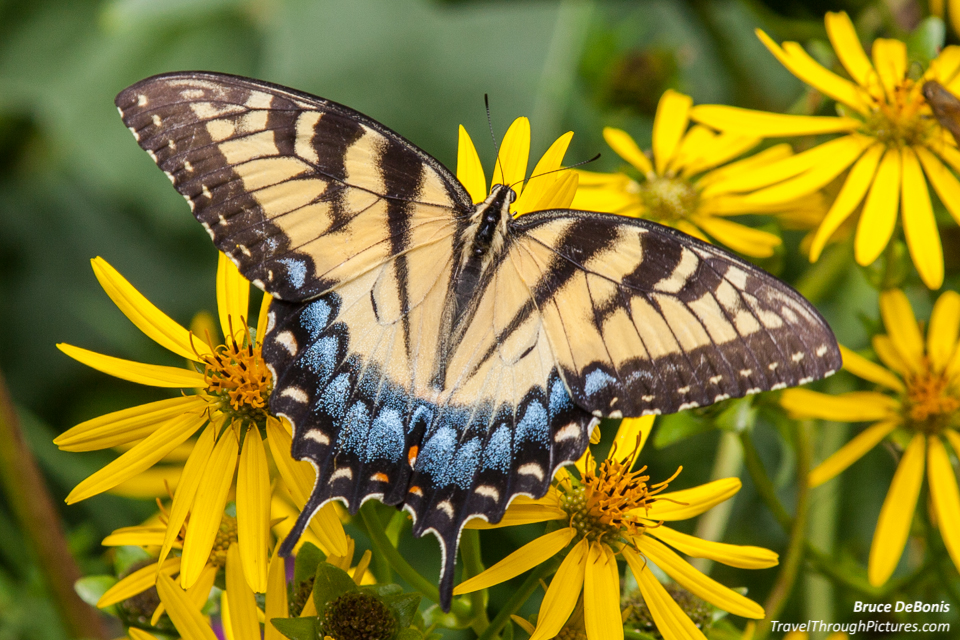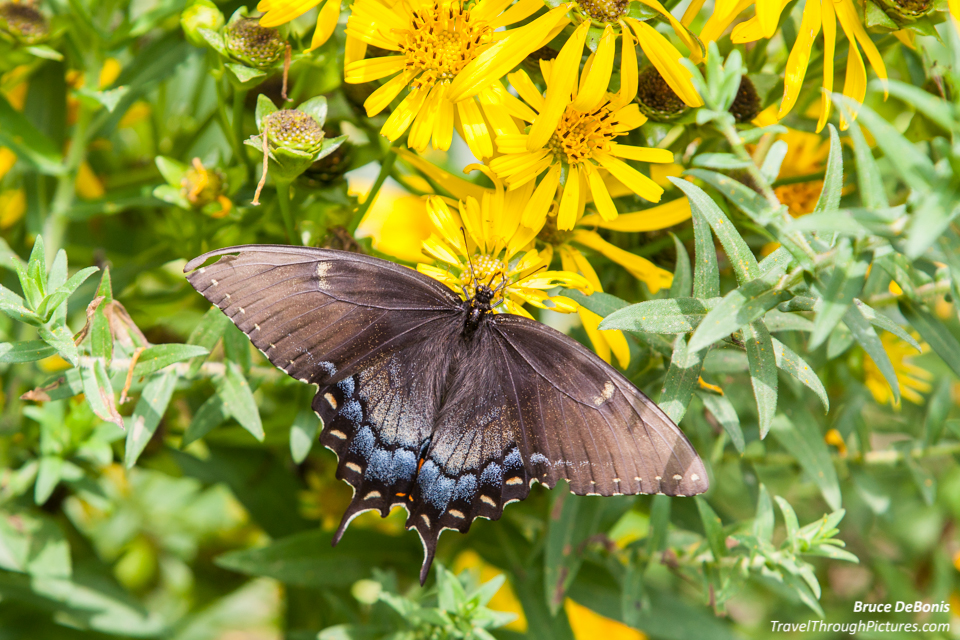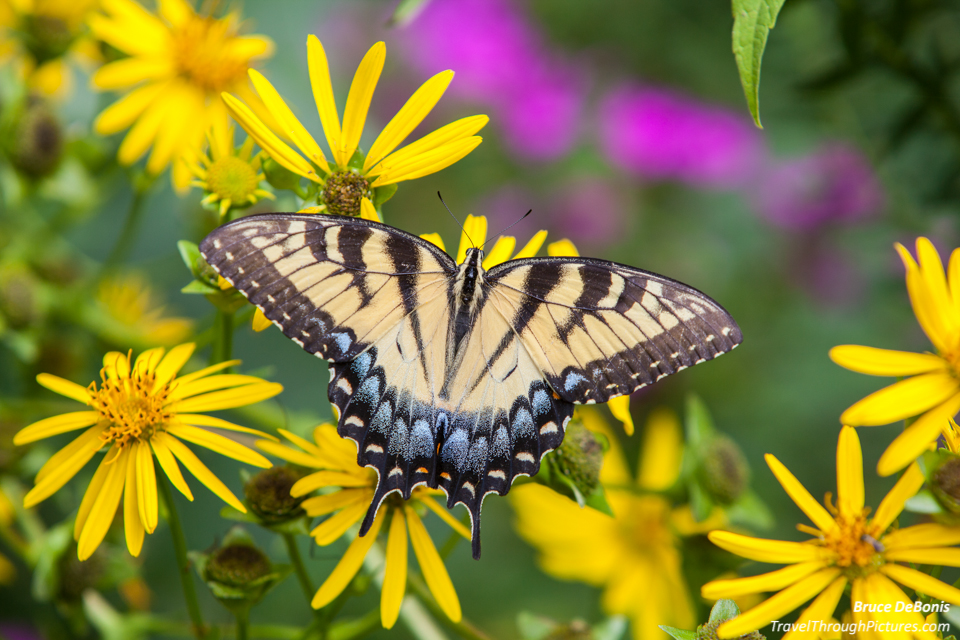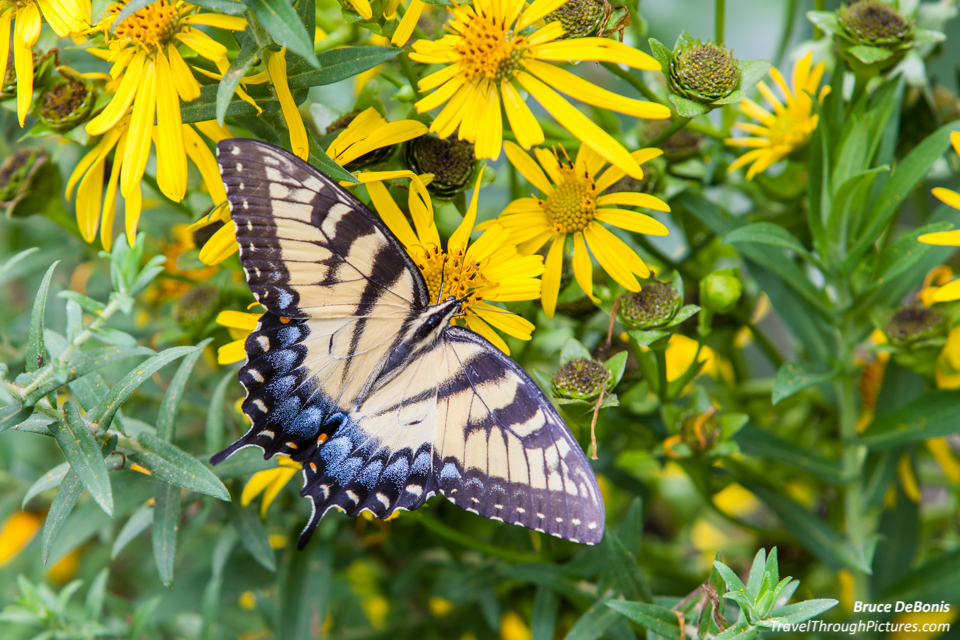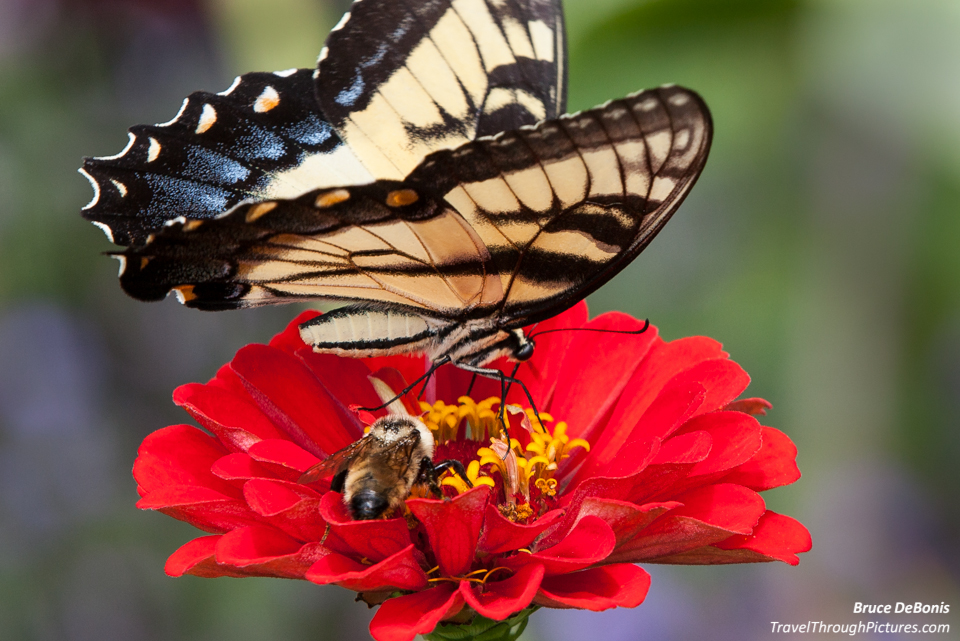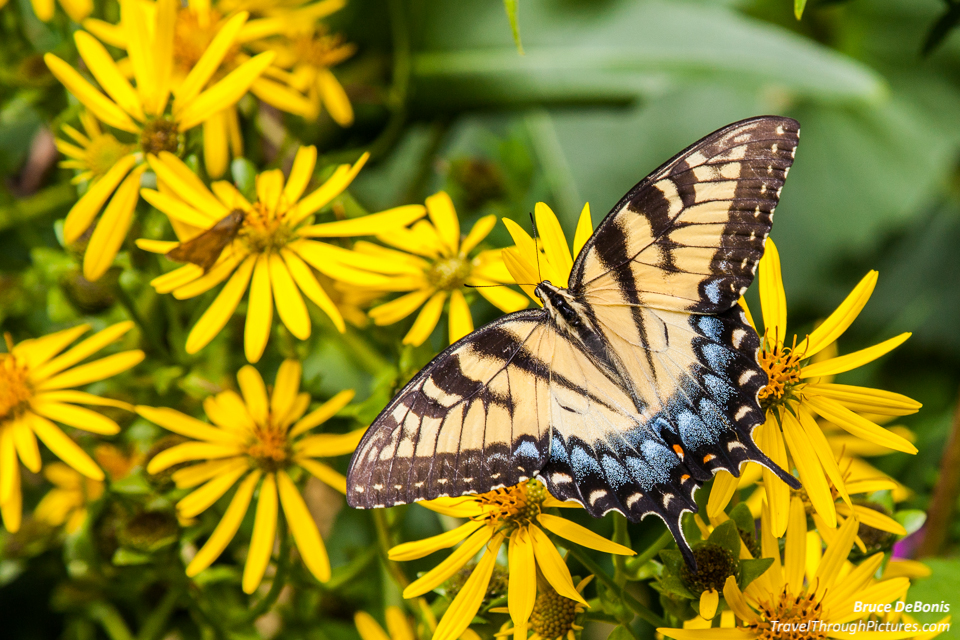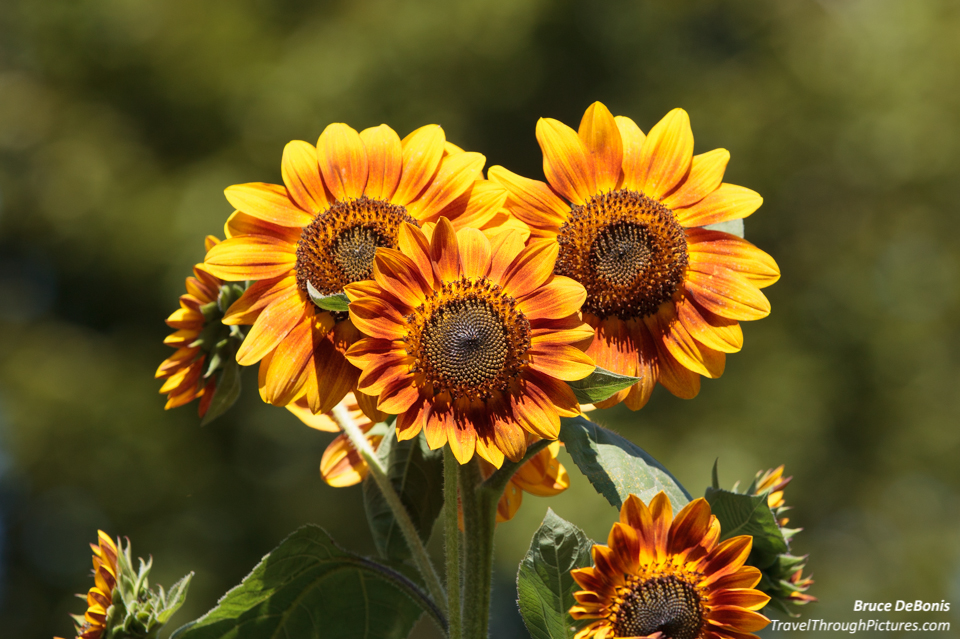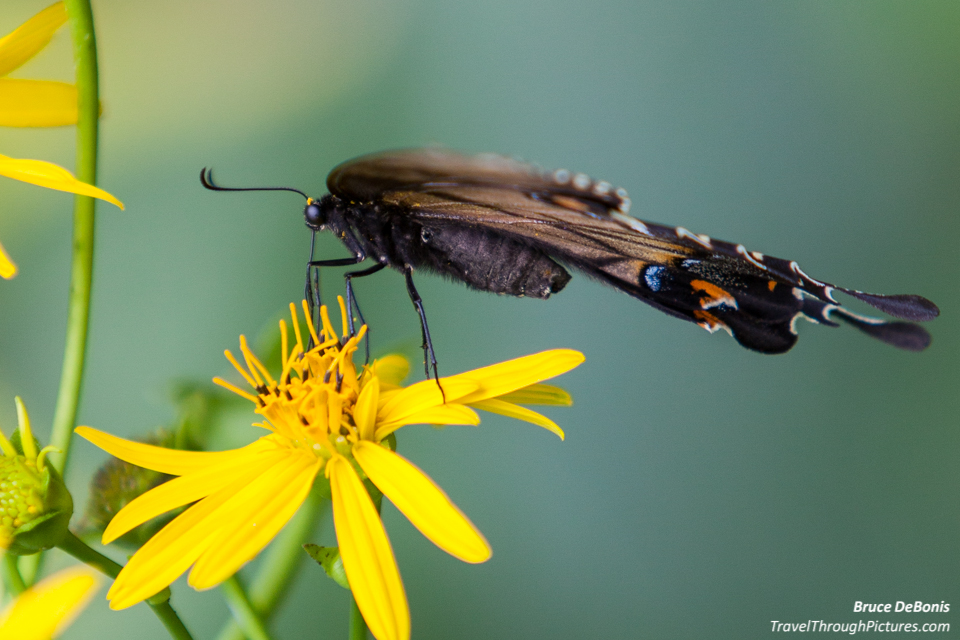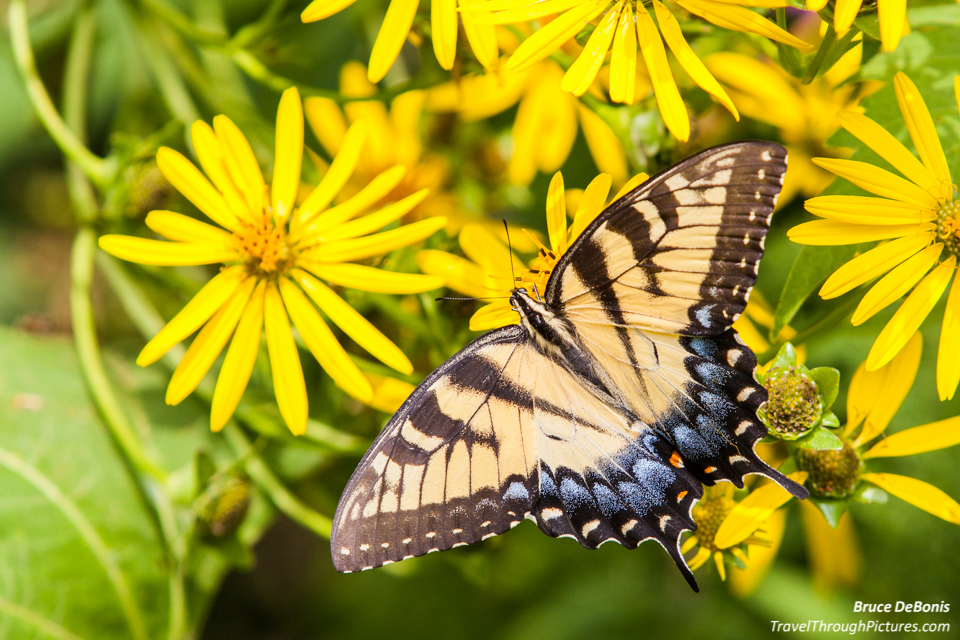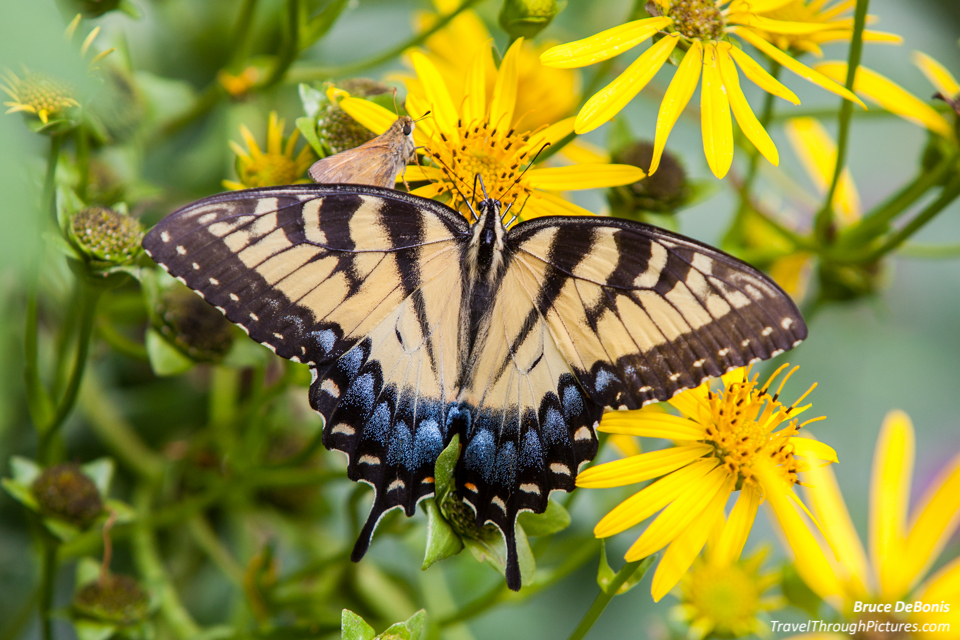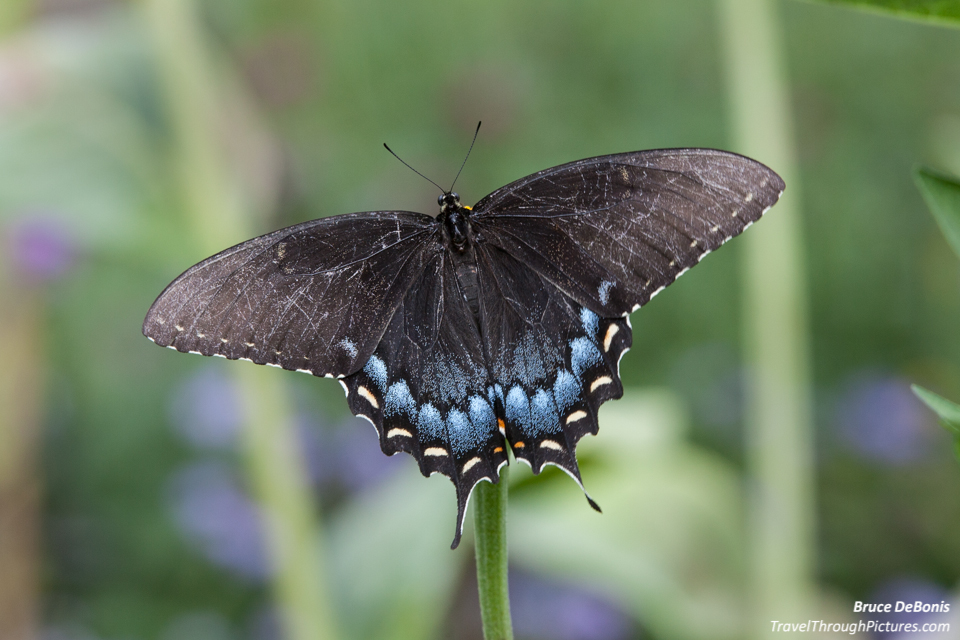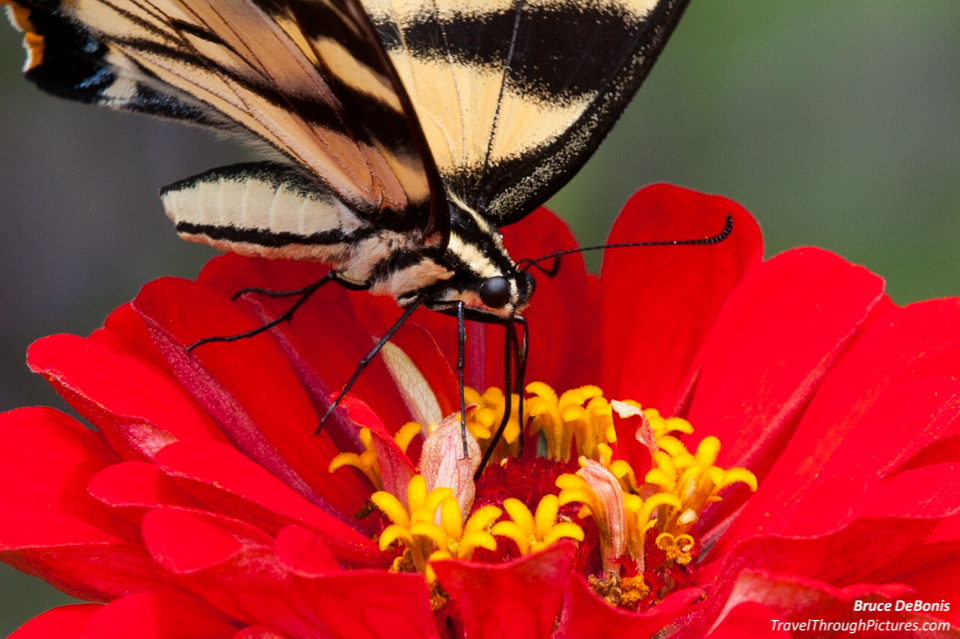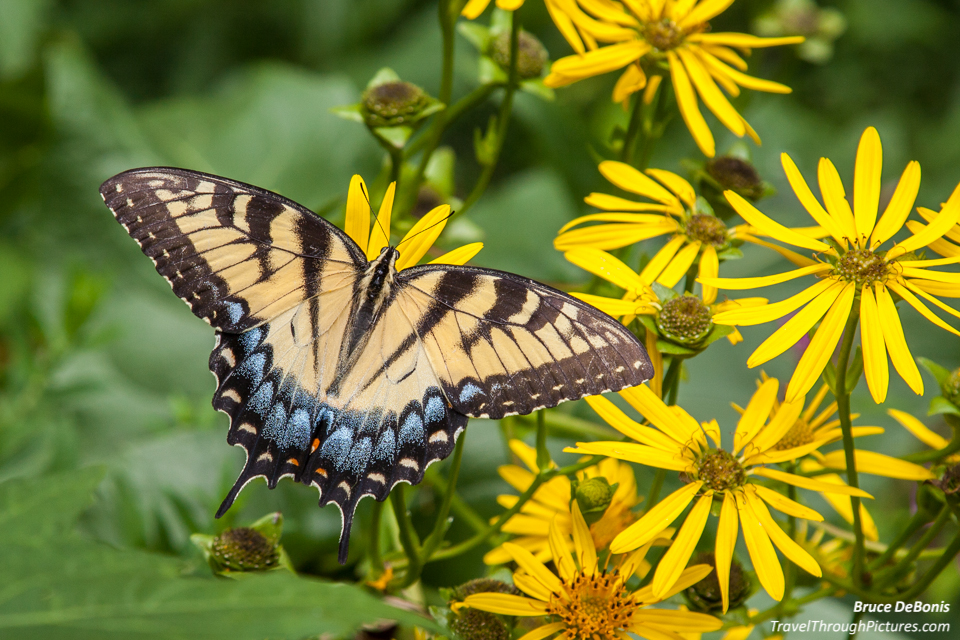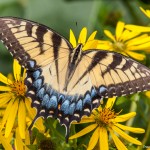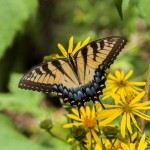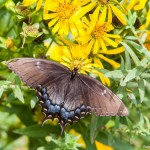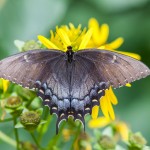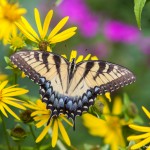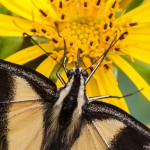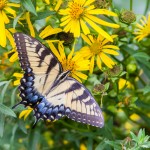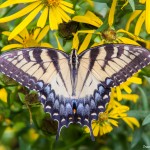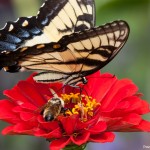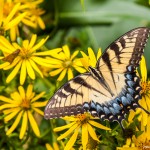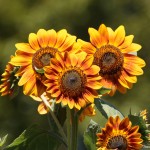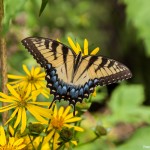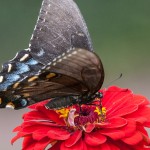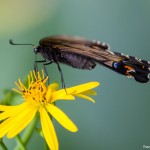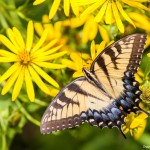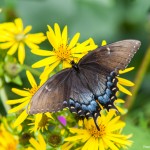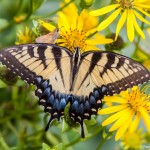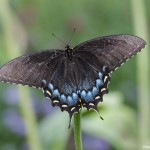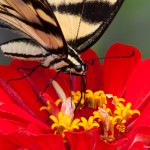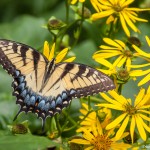Swallowtail Butterflies
You can’t go wrong with pictures of butterflies. Why some bugs disgust us and make our skin crawl while others are symbols of all things good is just odd to me, but we do judge books by their covers. The yellow ones here are Tiger Swallowtail butterflies and the black ones are Black Swallowtails.
Don’t get excited
You gotta stay calm and come up to butterflies slowly. I like to look the other way, keep my camera to my side, and pretend I am thinking about my dwindling bank account. Bugs seem to know what is going on around them and anything taking interest in them sends them away in a flash… or is it a flutter?
Once you find a bush or a group of flowers that are appealing to butterflies, just stand there and wait. The butterflies will come to you. I don’t know why I started this section with “Don’t get excited” as anyone standing and staring into a bush trying to take pictures of butterflies can’t be a very exciting er.. excitable person anyway. Face it, this is a geeky hobby and I would rather be at a party full of lonely super models… but that ain’t gonna happen anytime soon so I do the next best thing… stand catatonic-like bent over a shrubbery.
Butterflies can be tough to shoot
The biggest challenge shooting butterflies, besides the fact that they don’t sit still, is getting the whole bugger, er um bug, into focus. To get all of their wings in focus, you have to make sure their wings are lying flat and you position your camera perpendicular to their wing plane – in other words, the entire surface of both wings have to be an equal distance from your camera. If the butterfly is at an angle or has their wings in a “V”, probably half of your picture is going to be terribly out of focus.
To get around this, you can stop down your aperture to a more narrow opening (a larger f/number) which will increase your depth of field (i.e., how deep the in-focus range will be). Of course when you stop down, your camera will decrease shutter speed to compensate for the loss of light from smaller apertures. So be careful as you don’t want to blur your pictures from camera shake or butterfly movement.
Since I was very lucky having so many butterflies on this one bush, I decided to experiment and learn. I started shooting these at f/5.6, and then moved up to f/8. When I later viewed my pics for the day and saw that most had focus problems, I learned that f/8 yielded the best pictures due to the more closed the aperture is, the deeper the depth of field. I should have stopped it down even further and skipped the wider apertures.
The other challenge is just getting close enough to focus on them and fill your camera screen. I tried two lenses on these butterflies, my Canon 24-105 L f/4.0 IS that can focus pretty darn close up, and my Canon 70-200mm L f/2.8 IS II that requires the addition of a Canon EF 12 II extension tube to focus closely. Both lenses did a great job and I can’t say which was better or easier to use.
I can’t recommend an extension tube enough. Everyone should carry one in the camera bag at all times. Get the thin Canon EF 12 and you will always be able to get close to whatever interesting and disgusting bug you come across.
The light
The light was bright but overcast. This makes for great shots of bugs and flowers due to the nice, even lighting with no harsh shadows from leaves and other obstructions covering half your bug. However, this softer lighting can result in dull looking pictures from a lack of lighting contrast. So using LightRoom 4, I improved the contrast and used some other zingy tricks to them to get them to pop a bit more.
The Equipment:
- Canon 5D MkII
- Canon 24-105 L f/4.0 IS
- Canon 70-200mm L f/2.8 IS II, with
- Canon EF 12 II extension tube

